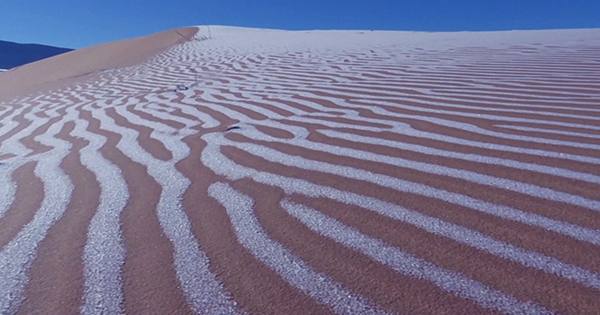Itsukushima Shrine (厳島神社, Itsukushima-jinja) on Miyajima is the source of both the island’s fame and its name. Formally named ‘Itsukushima’, the island is more popularly known as “Miyajima”, literally “shrine island” in Japanese, thanks to its star attraction. Known for its “floating” torii gate, the Itsukushima Shinto Shrine dates back more than 1,400 years. It is in the city of Hatsukaichi in Hiroshima Prefecture in Japan. The shrine complex is listed as a UNESCO World Heritage Site, and the Japanese government has designated several buildings and possessions as National Treasures.
The shrine and its torii gate are unique for being built over water, seemingly floating in the sea during high tide. The shrine complex is a holy place of Shintoism and is made up of 20 structures. The impressively designed structures are connected by boardwalks, but one of the best ways to experience the complex is by taking a boat cruise around the inlet during high tide.

The Itsukushima shrine is one of Japan’s most popular tourist attractions. It is most famous for its dramatic gate, or torii on the outskirts of the shrine, the sacred peaks of Mount Misen, extensive forests, and its aesthetic ocean view. The shrine complex itself consists of two main buildings: the Honsha shrine and the Sessha Marodo-jinja. The complex is also listed as a UNESCO World Heritage Site, and six of its buildings and possessions have been designated by the Japanese government as National Treasures.
The tori gate is currently covered entirely by semi-transparent scaffolding while it is undergoing restoration works in preparation for the 2020 Olympics which is scheduled to take place in 2021.
History –
The three deities of Itsukushima Shrine were born when Amaterasu Ōmikami (goddess of the sun) and her brother Susanoo-no-mikoto made a pledge on the Celestial Plain, using a jewel and a sword. Since ancient times, they have been revered and worshipped as deities that ensure the well-being of the imperial family, guard the nation, and protect seafarers.
When the deities were looking for the best location to settle, Saeki no Kuramoto, who governed the island, received an oracle. Led by a divine crow from the Celestial Plain, he sailed around the island with the deities and decided to build a shrine at this place where the tide ebbs and flows. According to an ancient record, this took place in 593, the year Empress Suiko ascended the throne.
In 1168, Taira no Kiyomori, who worshipped at the shrine, rebuilt it in the shinden-zukuri style, an architectural style in which residences of the nobility were built in those days. As Kiyomori assumed higher posts in the imperial court, not only the Taira clan but many other eminent people also visited the shrine, including members of the imperial family and aristocrats, such as former Emperor Goshirakawa, who had joined a Buddhist order, in 1174 and retired Emperor Takakura in March and September of 1180. They brought with them the culture of Kyoto.
After the Taira regime, the shrine was revered and patronized by the ruling Genji clan, then by Ashikaga Takauji (1305-1358) and Ashikaga Yoshimitsu (1358-1408) and other shoguns of the Muromachi period, and by the Ōuchi and Mōri clans during the Warring States period.
“Miyajima of Aki Province” became well known as one of the three most scenic places in Japan, along with Matsushima and Amanohashidate. In 1996, Itsukushima Shrine was registered as a UNESCO World Cultural Heritage site.
Brief Synthesis –
Originally Itsukushima was a pure Shinto shrine “where no births or deaths were allowed to cause pollution. Because the island itself has been considered sacred, commoners were not allowed to set foot on it throughout much of its history to maintain its purity. Retaining the purity of the shrine is so important that since 1878, no deaths or births have been permitted near it. To this day, pregnant women are supposed to retreat to the mainland as the day of delivery approaches, as are the terminally ill or the very elderly whose passing has become imminent. Burials on the island are forbidden. To allow pilgrims to approach, the shrine was built like a pier over the water, so that it appeared to float, separate from the land. The red entrance gate, or torii, was built over the water for much the same reason. Commoners had to steer their boats through the torii before approaching the shrine.
The first shrine buildings here were probably erected in the 6th century. The present shrine dates from the 13th century but is an accurate reflection of the12th century construction style and was founded by the most powerful leader of the time, Taira no Kiyomori. The property covers 431.2 hectares on the Island of Itsukushima, and the buffer zone (2,634.3 ha) includes the rest of the island and part of the sea in front of Itukushima-jinia. The property comprises seventeen buildings and three other structures forming two shrine complexes (the Honsha complex forming the main shrine, and Sessha Marodo-jinja complex) and ancillary buildings as well as a forested area around Mt. Misen.

The buildings of Itsukushima-jinja are in the general tradition of Japanese Shinto architecture, in which a mountain or natural object becomes the focus of religious belief to be worshipped from a shrine, generally constructed at the foot of the mountain. The harmoniously arranged shrine buildings in the property are located on the sea and the scenery, with a trinity composed of the man-made architecture in the center, the sea in the foreground, and the mountains in the background, and have become recognized as a Japanese standard of beauty. The sites reveal great artistic and technical skills and are unique among extant shrine buildings in Japan. The shrine is an outstanding and unique architectural work which combines manmade achievements and natural elements. It is tangible proof of the great achievements of Taira no Kiyomori.
Even though the buildings of Itsukushima-jinja have been reconstructed twice, this was done in a scrupulously accurate manner preserving the styles that prevailed from the late 12th century to the early 13th century. The most recognizable and celebrated feature of the Itsukushima shrine, is its fifty-foot tall vermilion otorii gate (“great gate”), built of decay-resistant camphor wood. The placement of an additional leg in front of and behind each main pillar identifies the torii as reflecting the style of Ryōbu Shintō (dual Shinto), a medieval school of esoteric Japanese Buddhism associated with the Shingon Sect. The torii appears to be floating only at high tide. When the tide is low, it is only approachable by foot from the island. Gathering shellfish near the gate is also popular at low tide. At night, powerful lights on the shore illuminate the torii. Although the gate has been in place since 1168, the current gate dates back only to 1875.
Shinto architecture has many distinct parts, most of which include the shrine’s honden ( main hall) consists of “an eight by four bay structure with a kirizuma roof” made out of cypress, and the unusually long haiden (main oratory) and its equally long heiden (offertory hall). The honden “is an eight-by-four bay structure with a kirizuma roof surfaced in cypress bark.” Its walls are decorated in white stucco, and the walls were constructed using a process requiring fifteen coats of white stucco, with vermilion woodwork.
Extending from the sides of the haraiden of the main shrine is a noh stage which dates from 1590. Noh theater performances have long been used to pay homage to the gods through the ritual acting out of key events in Shinto myth.
The boundaries of the property include all the shrine buildings and natural elements that are indispensable for demonstrating the harmonious building arrangement and the integrated scenic beauty at the time of its original construction by Taira no Kiyomori in the 12th century. Moreover, the remaining area of the island and a section on the sea forms an overall buffer zone to control proposed development activities, and thus the integrity of the property is intact.
Visiting Time –
The shrine is located in a small inlet, while the torii gate is set out in the Seto Inland Sea. Paths lead around the inlet, and visitors enjoy walking along with them while looking out onto the sea. After sunset, the shrine and the torii gate are illuminated daily until 23:00, providing a perfect backdrop for ryokan guests to enjoy an evening walk in yukata and geta sandals. It is not possible to enter the shrine after sunset, though.
On 5th September 2004, the shrine was severely damaged by Typhoon Songda. The boardwalks and roofs were partially destroyed, and the shrine was temporarily closed for repairs. Today anyone can go visit the shrine for only 300 yen.
Alternatively, tourists can view the illuminated island from boat cruises. Cruises last thirty minutes and take passengers around the bay and through the torii gate (during high tide only). Reservations are required and can be made through one’s ryokan or at the tourist information desk.
Information Sources:
















